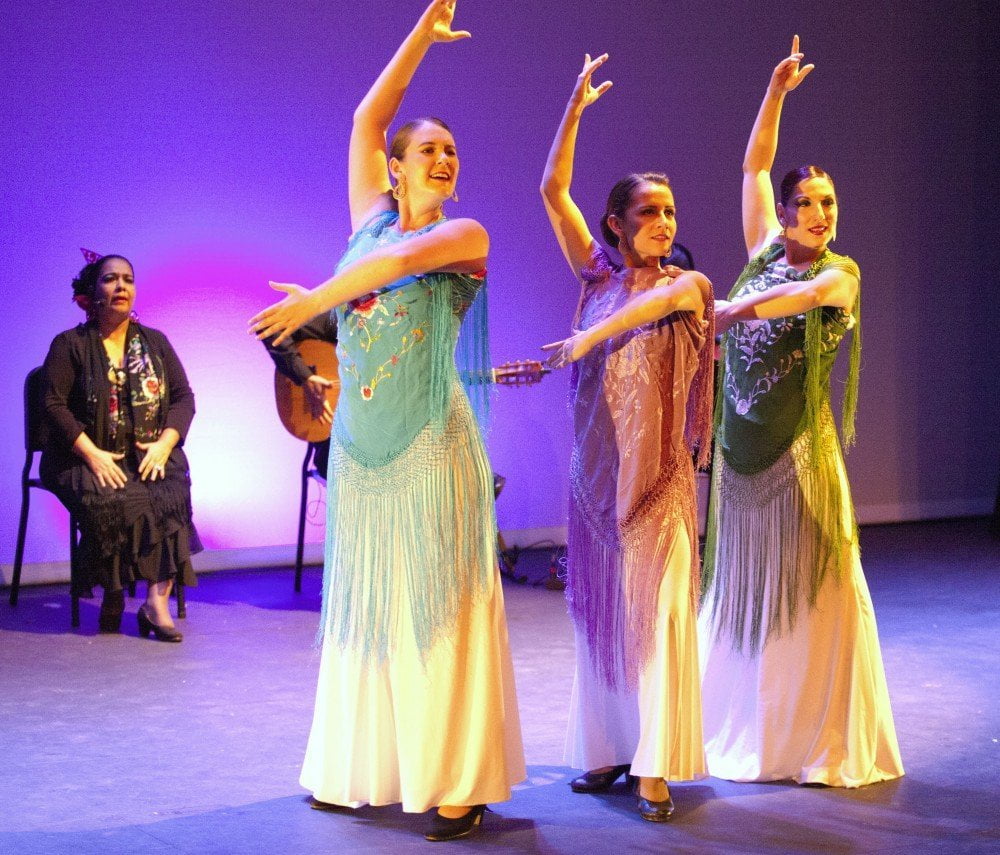Orignally posted in the Long Center blog “Long Story Short” before the debut of “The Red Shoes” – A Flamenco Fairy Tale October 25, 2012
Flying fringe, swinging earrings, pounding heels, and yards of ruffles: one of flamenco dance’s most striking characteristics is the costuming of the female performer. While male dancers may get to don flashy suits, women in flamenco get to be the real peacocks. However, the surface frills on a dancer’s costume mask the steely interior—physical and emotional – required to perform flamenco.

Both as a dancer and as an aficionado of flamenco, I have always loved the dichotomy inherent in flamenco performances—dressed to the nines in costumes inspired by modest 18th and 19th century fashions, flamencobailaoras often personify dignity and repose one moment, seconds later exploding into a torrent of powerful footwork, savage turns, and movements alternating between playful and sensual. The swathes of fabric may look spectacular onstage, but underneath is where the sweaty, muscular reality of flamenco technique takes place. Any dancer worth her salt knows that a core of iron is required to maintain the proud carriage of the flamenca, not to mention execute the arched-back turns known as quebradas. Rapid-fire footwork demands hundreds of sweat-soaked hours in the studio to perfect, and it takes deltoids like rocks to maintain arms gracefully swaying overhead. At showtime, though, the physical workout of flamenco dance is often overshadowed by the lace and ruffles. The steel nails covering the heels of our shoes are never seen by the audience.
This juxtaposition of hard and soft is also evident in flamenco music. Many people know flamenco for its delicate guitar melodies and upbeat rhythms, but listen closely to the Spanish lyrics and flamenco’s origins as the music of the poor and oppressed in Andalucia become evident. Even as singers describe heartrending moments like the death of a child or loss of a lover, dancers and guitarists elaborate the gentlest phrases of movement and melody. At other times, as in the seemingly lighthearted buleria, dancers and musicians work in perfect tandem in what is actually a rhythmically complex tour de force.
One of my favorite tasks as Artistic Director of A’lante Flamenco Dance Ensemble is choosing wardrobe for the company. I love deciding on the character of each piece and developing it through costume and staging. For A’lante’s show at the Rollins Theatre on October 26 and 27, Act One and Act Two are strikingly different in their costume requirements. The first act, “Dark Sounds/Sonidos Negros” consists of six dances, each distinct from the rest in music, look, and attitude, ranging from strictly traditional to totally contemporary in style.
For the second act, “The Red Shoes,” I chose costumes to highlight an idea in Hans Christian Andersen’s story that I find is a perfect match for flamenco: the fine line between an innocent passion and a dangerous obsession. In Andersen’s tale, the young protagonist flouts grim social convention by wearing red shoes to church and dancing frivolously while her mother lies dying. Unbeknownst to her, the red shoes are bewitched by a magician, forcing her to dance without stopping and endangering her life. Far from a simple children’s story, “The Red Shoes” delves deep into psychological territory and nightmarish suffering. I can’t help but be reminded of flamenco’s typically dual nature: combining joy and suffering, rhythm and melody, soft and hard… lace and steel.
– Olivia Chacón
